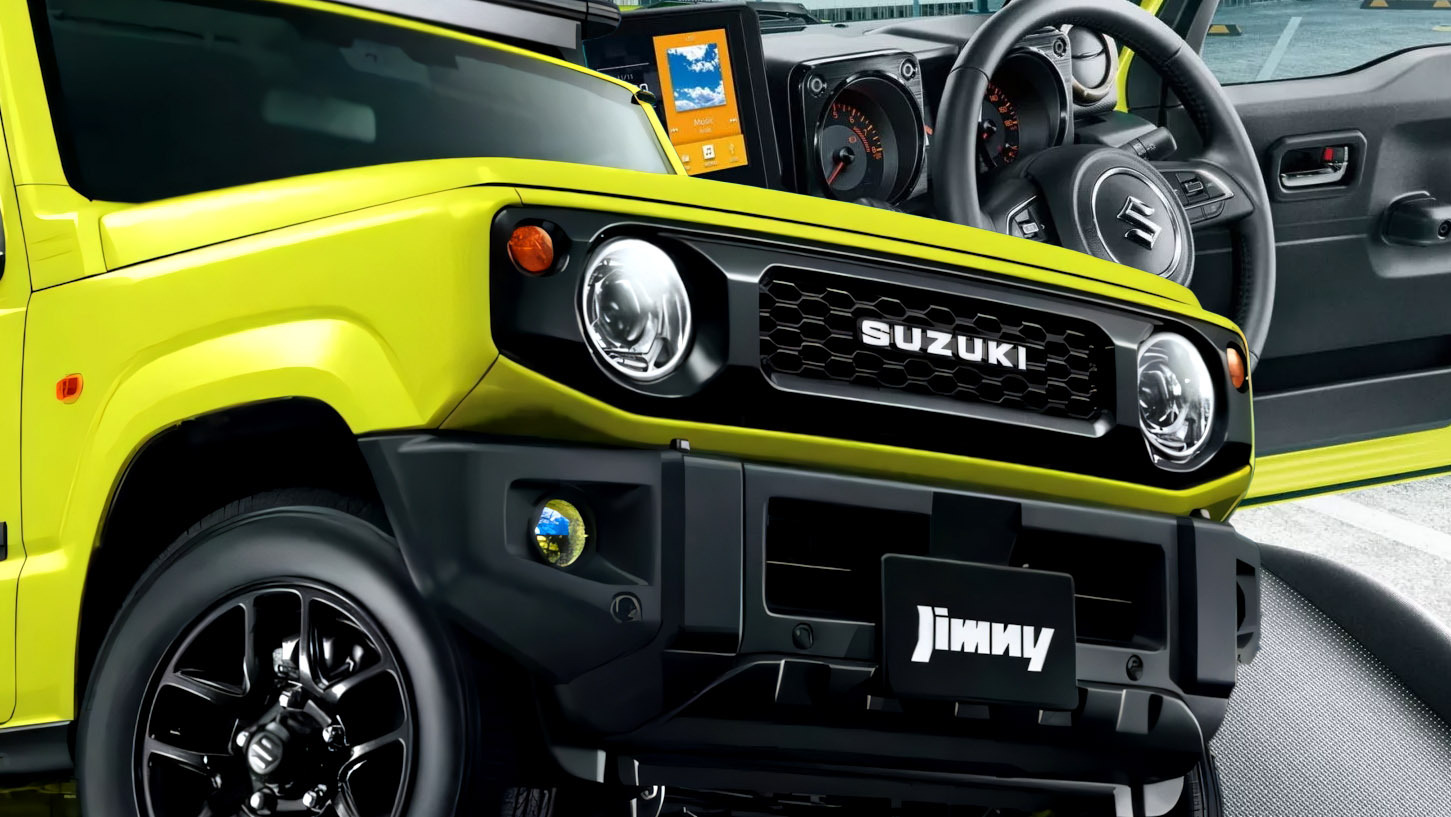The three-door Jimny is finally on par with the five-door model in terms of safety equipment
Seven years on from its 2018 debut, the Suzuki Jimny still reigns as everyone’s favorite pocket-sized off-roader. While most automakers would’ve launched a new model or at least a mid-cycle refresh by now, the Japanese brand chose a more conservative path, introducing mild updates centered on safety and connectivity.
The updates apply only to the three-door version, since the five-door Jimny Nomade remains a recent addition to Suzuki’s Japanese range.
More: From Robots To EVs, Suzuki’s Tokyo Show Lineup Has It All
As expected, the exterior design stays exactly as it was, and it wears its years well. The boxy little 4×4 continues to charm with its purposeful simplicity, and if you ever feel the urge to tweak its looks, there’s no shortage of factory and aftermarket parts out there.
Did You Know Suzuki Sells A Kei Class Jimny?
If the proportions in some of the photos seem a bit odd, that’s because you’re looking at both the regular and narrow-body Jimny. The latter is a Japanese market-specific variant designed to be compatible with the kei car regulations and does without the fender extensions of the global model that’s known domestically as the Jimny Sierra.
Another cool feature of the JDM model is the pair of small mirrors mounted beneath the side mirrors to help reduce blind spots.
Cabin and Safety Updates
Inside, the Jimny gains two welcome upgrades. The instrument cluster now features a 4.2-inch display nestled between the analogue dials, a change likely to please fans who prefer traditional gauges over a fully digital setup.
Buyers can also opt for a 9-inch infotainment screen borrowed from the Swift, which adds up-to-date connectivity and a sharper interface. The base versions, however, continue with the familiar chunky plastic panel on top of the center console instead of a small cubby or a phone mount.
More: Suzuki’s Quirky Crossover Hides More Than A Fresh Face
More importantly, the three-door Jimny has finally caught up with the five-door model in terms of safety equipment. It has done so by gaining the “Dual Sensor Brake Support II” system, along with standard lane departure prevention, auto high beams, sign recognition, and new cybersecurity measures to comply with stricter regulations.
Furthermore, models equipped with the auto transmission come standard with Adaptive Cruise Control, and Rear False Start Prevention Function.
Powertrain
Mechanically, everything carries over. The regular Jimny is still powered by a turbocharged 658cc three-cylinder producing 63 hp (47 kW / 63 PS), while the Jimny Sierra packs a naturally aspirated 1.5-liter four-cylinder that’s good for 103 hp (77 kW / 105 PS).
Both are mated to either a five-speed manual or a four-speed automatic and utilize Suzuki’s part-time 4WD system and rugged ladder-frame chassis.
Pricing and Availability
The updated model is already available to order in Japan and will likely find its way to certain export markets in the future.
Prices range between ¥1,918,400-2,160,400 ($12,800-14,400) for the Jimny and ¥2,271,500-2,385,900 ($15,200-15,900) for the Jimny Sierra, while the optional 9-inch display costs ¥128,700 ($860). Depending on the trim, pricing is roughly $1,000-2,000 higher than before.
Google News
MSN Start
Thanos Pappas, a product design engineer by trade, has been wading through automotive journalism for… Read full bio












